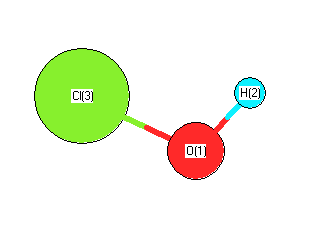.
| squib |
reference |
DOI |
| 1986Dar/Ger117-130 |
WD Anderson,MCLGerry, RW Davis "The Microwave Spectrum of Isotopically Substituted Hypochlorous Acid: Determination of the Molecular Structure" J. MOL. SPECT. 115, 1 I7- 130 ( 1986) |
10.1016/0022-2852(86)90280-8 |
| 1994Jun/Laf:583 |
Junttila, M.L.; Lafferty, W.J.; Burkholder, J.B. "The High Resolution Spectrum of the Nu(1) Band and Ground-State Rotational-Constants of HOCl." Journal of Molecular Spectroscopy. 164, 583-585 (1994) |
10.1006/jmsp.1994.1102 |
| 1996Mod/DeN:1645 |
G Modugno, P De Natale, M Bellini, M Inguscio, G Di Lonardo, L Fusina, J Vander Auwera "Precise measurement of molecular dipole moments with a tunable far-infrared Stark Spectrometer: application to HOCl" J. Opt. Soc. Am. B Vol 13 No 8 1996 p 1645-1649 |
10.1364/JOSAB.13.001645 |
| JANAF |
Chase, M.W., Jr.; Davies, C.A.; Downey, J.R., Jr.; Frurip, D.J.; McDonald, R.A.; Syverud, A.N., JANAF Thermochemical Tables (Third Edition), J. Phys. Chem. Ref. Data,Suppl. 1, 1985, 14, 1. |
|
| Shim |
Shimanouchi, T. , Tables of Molecular Vibrational Frequencies, Consolidated Volu |
10.6028/NBS.NSRDS.39 |
| VEEL5 |
M.E. Jacox, Vibrational and Electronic Energy Levels of Polyatomic Transient Molecules, J. Phys. Chem.Ref. Data, Monograph 3 (1994) (updated data in NIST Chemistry Webbook - http://webbook.nist.gov/chemistry/ |
|
| webbook |
NIST Chemistry Webbook (http://webbook.nist.gov/chemistry) |
10.18434/T4D303 |











